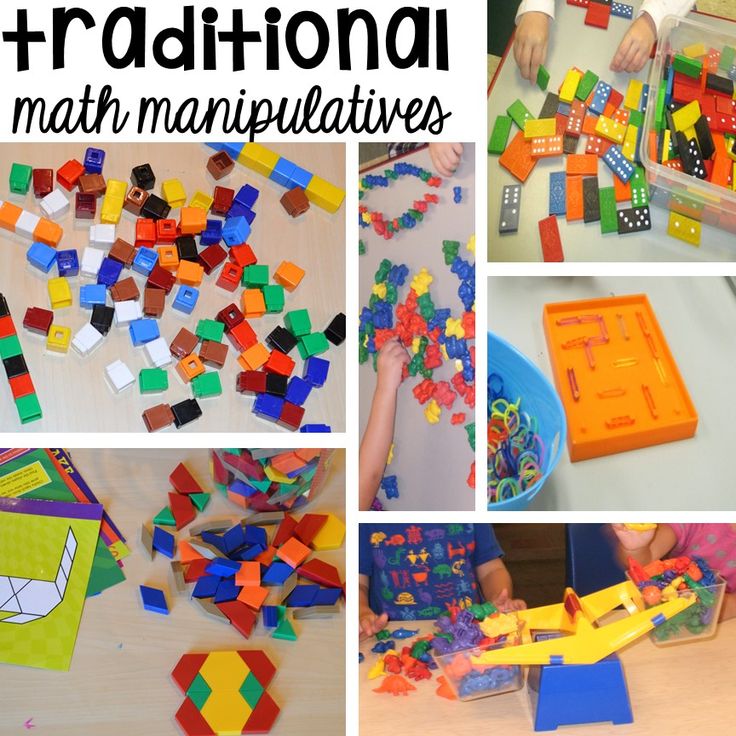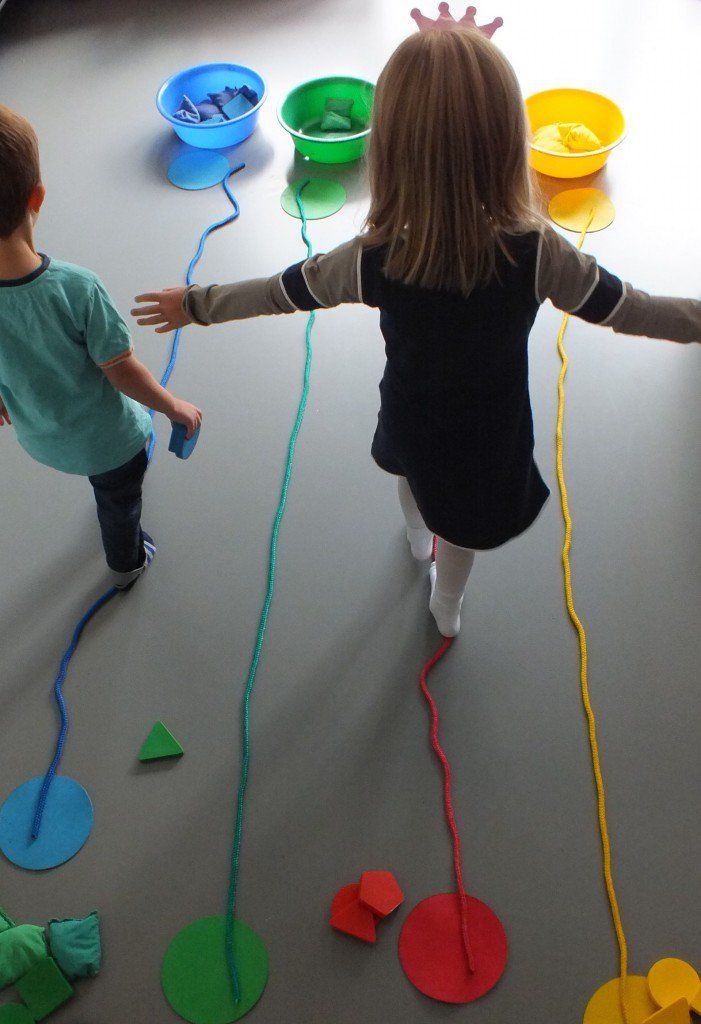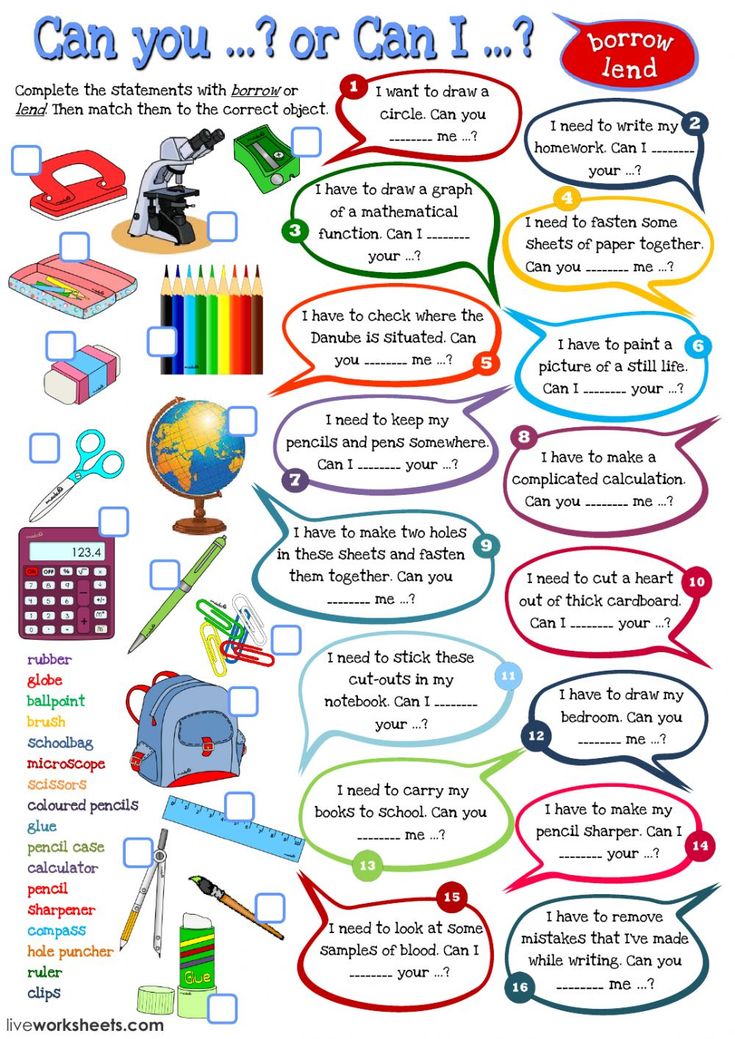Early childhood education software
The Best Software for Early Childhood Education Classrooms
Early childhood education (ECE) today is seeing an increase in technology as a part of the classroom integration. With innovations in technology and software today, it’s only sensible that it gets introduced to classrooms for young children starting at a very early age. In order to prepare them for the devices they must handle in their near future such as laptops, desktops, tablet devices and mobile phones, these tools get introduced to them starting inside classrooms. Technology, however, isn’t just for teaching children how to use them. ECE is seeing the benefits of software tools that are great for learning. The laptops and touch screens get students involved in interactive educational games for developing skills in math, reading, typing, day-to-day tasks and positive reinforcement for good behavior. Studies have shown improvement in these subjects as well as a keen level of adjustment to these technological introductions in classrooms.
They’re developing advanced cognitive skills as well as interaction skills with the help of technology inside classrooms. Below are some software suggestions for ECE classrooms today.
Alphabets (Reading Comprehension)
TeachMe Toddler
Words and letters are the basic foundations to ECE. An excellent app for tablet devices is TeachMe Toddler, which brings phonic learning, letters, colors, shapes and numbers into the classroom in a single app. It is an excellent app for children to learn letters, basic words and names of shapes and numbers. This app is great for ages 5 and up, and costs only 99 cents on iTunes, although customer reviews on iTunes have mentioned that 2 year-olds have also learned to use it. This app is compatible with iPads, iPhones and the iPod touch.
Mystery Word Town
The Mystery Word Town is a cowboy themed app that gets students to learn spelling in a fun and enriching way. The students must collect letters, which is equivalent to collecting gold, in order to put together the spelling of the right word.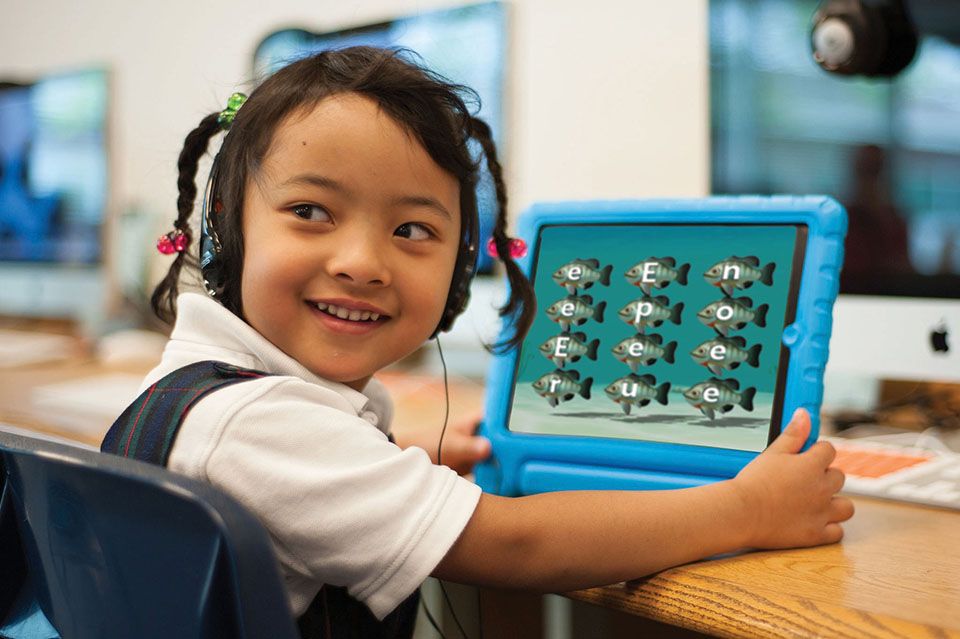 There are small challenges along the way which students can overcome in order to advance in the game. This app can be used for multiple players and there are several levels of difficulty. There are also two modes of play so that students won’t grow tired of the same game. This app is great for grades 1st through 7th. Students can learn words and how to spell them based on sight. Students also get used to hearing the words as they play so they pick up on pronunciation. An important feature of this app is that there are no links to external sites or social media so that there are no distractions. There are no ads or third party site links, making it a kid-friendly app.
There are small challenges along the way which students can overcome in order to advance in the game. This app can be used for multiple players and there are several levels of difficulty. There are also two modes of play so that students won’t grow tired of the same game. This app is great for grades 1st through 7th. Students can learn words and how to spell them based on sight. Students also get used to hearing the words as they play so they pick up on pronunciation. An important feature of this app is that there are no links to external sites or social media so that there are no distractions. There are no ads or third party site links, making it a kid-friendly app.
Positive Behavior Support and Reinforcement
ClassDojo
ClassDojo is an excellent software tool that you can easily integrate into your classroom. It is easy for teachers and students to learn to navigate. It has tools for instant messaging between teachers and parents to stay easily updated and posted, as well as broadcast announcements for the whole classroom and students’ parents to receive, “message received” notifications for teachers to monitor that parents have received and read any messages that teachers have sent on the students’ progress, as well as a photo feature to share any classroom moments with the students’ family.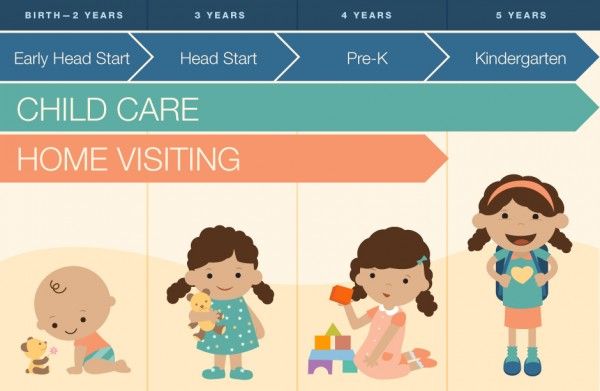 What makes the ClassDojo a preferred software for classrooms is its compatibility with devices such as the Android, iOS products such as iPads, iPhones and iPods, and all laptops and computers. So far, ClassDojo has been ranked highly in multiple blogs and site for its innovative and interactive use in classrooms while meeting very basic needs of teachers, students and parents altogether.
What makes the ClassDojo a preferred software for classrooms is its compatibility with devices such as the Android, iOS products such as iPads, iPhones and iPods, and all laptops and computers. So far, ClassDojo has been ranked highly in multiple blogs and site for its innovative and interactive use in classrooms while meeting very basic needs of teachers, students and parents altogether.
Math and Counting Apps
Count Sort Match
Count Sort Match is a great app that is fun and easy to use in classrooms for young children to learn how to count. It is essentially a match game that lets students match the right number with the right word to describe that number. It is an easy app to get students learning numbers and counting.
Hungry Fish
Another popular app is Hungry Fish. This software lets students find coral reef numbers with a number match with the number on the fish. As the fish eats the correct number, the fish grows bigger. This fun and interactive software is an excellent and playful way to get students to be engaged and learning.
This fun and interactive software is an excellent and playful way to get students to be engaged and learning.
Park Math
Park Math is a great software to get preschool children to play games on counting, patterns, sorting and very basic addition. The game is attractive to children because of the animal characters, bright colors, and interactive games. Children have responded positively to the Blue Bear host especially, and allowing children to grow comfortable with basic number concepts.
Writing and Illustrating
StoryBird
Young children love to create. Exploring creative options in the classroom is not only fun but with software or app, it’s mess-free. StoryBird is an app that can be made on tablet devices for children to write their own storybook. There are very simple tools that students can easily learn to navigate to create their own story, pictures, and words. Once it’s completed, students can share it in the classroom to show their peers and read their stories to their classmates.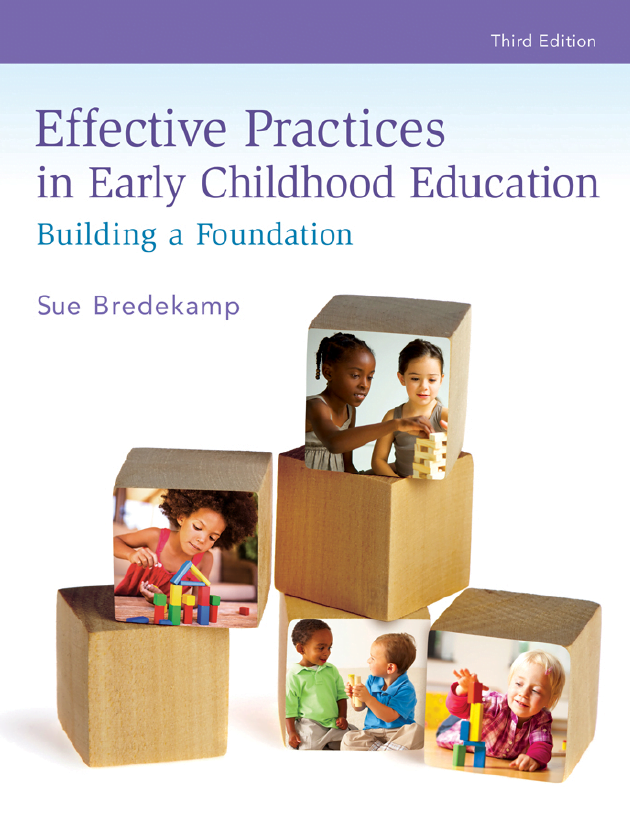 StoryBird is an excellent tool for teachers as well to custom-make their own stories that is oriented specifically for their own classrooms. Teachers can include their own students inside the book turning this classroom tool into an event.
StoryBird is an excellent tool for teachers as well to custom-make their own stories that is oriented specifically for their own classrooms. Teachers can include their own students inside the book turning this classroom tool into an event.
Little Bird Tales
Little Bird Tales is a similar learning tool that involves writing and creating e-books through a software. There is a drawing pad on this app for students to create their own illustrations. It is mess-free and can be an engaging way for students to flex their creative muscle. Students can use it to write their own stories or reports, depending on the assignment that teachers have for them. Families can also use this app to engage with their students and their school work. It’s also commonly used as a form of photo album that keeps baby photos.
Typing Software
Typing Instructor for Kids
Typing Instructor for Kids is a great software that is highly reviewed and consistently ranked highly on blogs and other review summaries. The interactive tutorial software is designed to get children engaged in typing, even instructing children on the best posture to keep when sitting and typing. Kids learn basic words or references such as WPM so that they get used to computer jargon starting at an early age. Children are exposed to various games such set in places like the west, underwater, in the air, under the sea or at the edge of a cliff. These various backdrops keep children focused and engaged. They play games while they learn to type and progress. This is an easy software that is simple for teachers to get used to, and for children to learn to navigate. It’s an important tool for classrooms to get children typing at an early age. Kids also learn the basics of where to keep their fingers when learning to first type.
The interactive tutorial software is designed to get children engaged in typing, even instructing children on the best posture to keep when sitting and typing. Kids learn basic words or references such as WPM so that they get used to computer jargon starting at an early age. Children are exposed to various games such set in places like the west, underwater, in the air, under the sea or at the edge of a cliff. These various backdrops keep children focused and engaged. They play games while they learn to type and progress. This is an easy software that is simple for teachers to get used to, and for children to learn to navigate. It’s an important tool for classrooms to get children typing at an early age. Kids also learn the basics of where to keep their fingers when learning to first type.
Day-to-Day
Teacher Tube
Teacher Tube is a video channel that is great for teachers to upload videos that are educational or have announcements. Students and parents can stay abreast on classroom updates through this interactive video tool.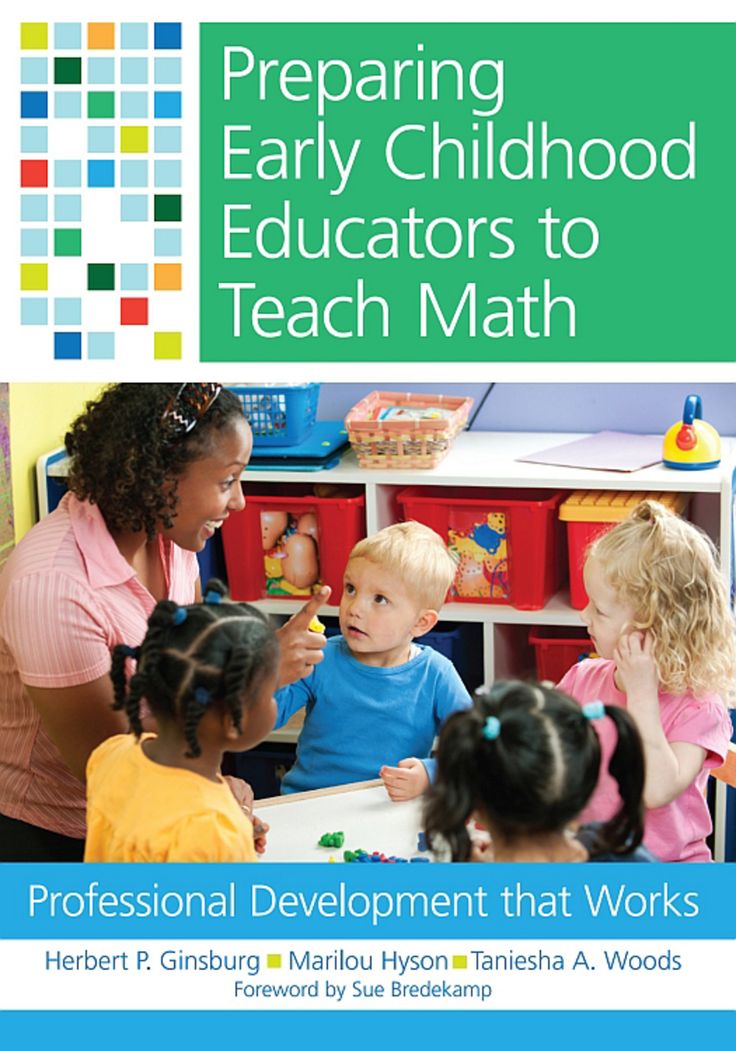 There are documents that can be uploaded for sharing, groups for discussions, profiles for all teachers, blog sites, and audio clips for teachers to upload sound clips such as storytelling and announcements. It’s also a great tool for students to refer to if they are on break and need a day-to-day update source. Seeing their teacher on a video channel could keep their educational experience consistent so that students don’t fall behind. This is also a great tool for students who are out sick. Teachers can upload videos of class courses for students to check out at home. This would prevent falling behind at school as well.
There are documents that can be uploaded for sharing, groups for discussions, profiles for all teachers, blog sites, and audio clips for teachers to upload sound clips such as storytelling and announcements. It’s also a great tool for students to refer to if they are on break and need a day-to-day update source. Seeing their teacher on a video channel could keep their educational experience consistent so that students don’t fall behind. This is also a great tool for students who are out sick. Teachers can upload videos of class courses for students to check out at home. This would prevent falling behind at school as well.
Early Childhood Education Software | iCare Software
Fun parties, special treats, and Thanksgiving classroom activities can help make this time of year enjoyable for young children. But as educators, you might be looking to take it one step further to explain the historical roots, cultural traditions and significance behind each holiday. Thanksgiving is no exception, and your team can begin instructing children …
Continue reading “Thanksgiving Classroom Activities Perfect For Preschool”
Posted byMary Ellen TennantPosted inChild Care, Early Childhood Education, Holidays, TeachersTags: children learn, early childhood classroom, Preschool LearningLeave a comment on Thanksgiving Classroom Activities Perfect For PreschoolHow a child is feeling can impact the kind of day they’ll have.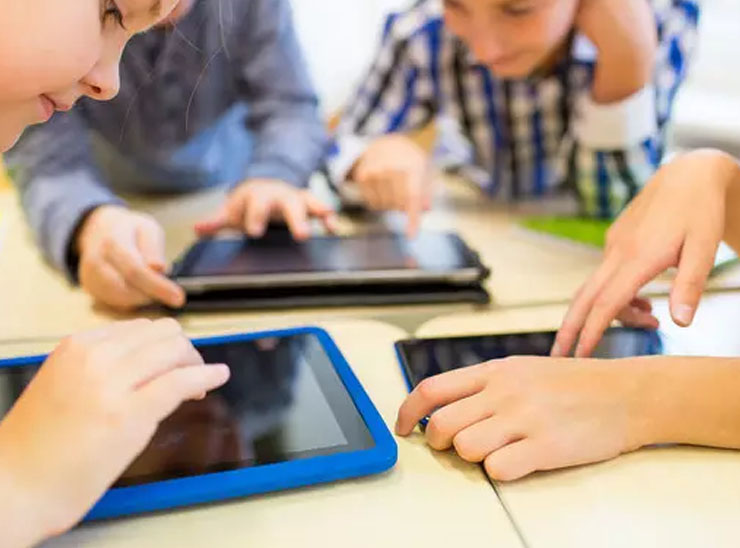 Whether they’re feeling happy, anxious, nervous or excited, you can start teaching emotional intelligence using a mood tracker. Not only that, but mood tracking also keeps parents informed about what’s happening with their child throughout the day. Effective parent communication can help …
Whether they’re feeling happy, anxious, nervous or excited, you can start teaching emotional intelligence using a mood tracker. Not only that, but mood tracking also keeps parents informed about what’s happening with their child throughout the day. Effective parent communication can help …
Continue reading “Mood Tracker Basics for Preschools and Daycares”
Posted byRebekah BratelyPosted inChildcare, Early Childhood EducationLeave a comment on Mood Tracker Basics for Preschools and DaycaresiCare Journal Templates Customized by State There’s a very fine line between profitability and financial hardships when it comes to how to run a successful daycare business. Accurate documentation, billing and invoicing are all crucial in ensuring your success. Early childhood education software can be a huge asset to provide the necessary child care success …
Continue reading “Increase Subsidies with These Child Care Success Tools”
Posted byRebekah BratelyPosted inBenefits, Childcare, Childcare Centers, childcare management, childcare management software, childcare software, Daycare Centers, daycare software, Early Childhood Education, Features, TeachersLeave a comment on Increase Subsidies with These Child Care Success ToolsPrepare for the upcoming school year with childcare center management tips and a daycare strategic plan to protect students, parents and staff from COVID-19.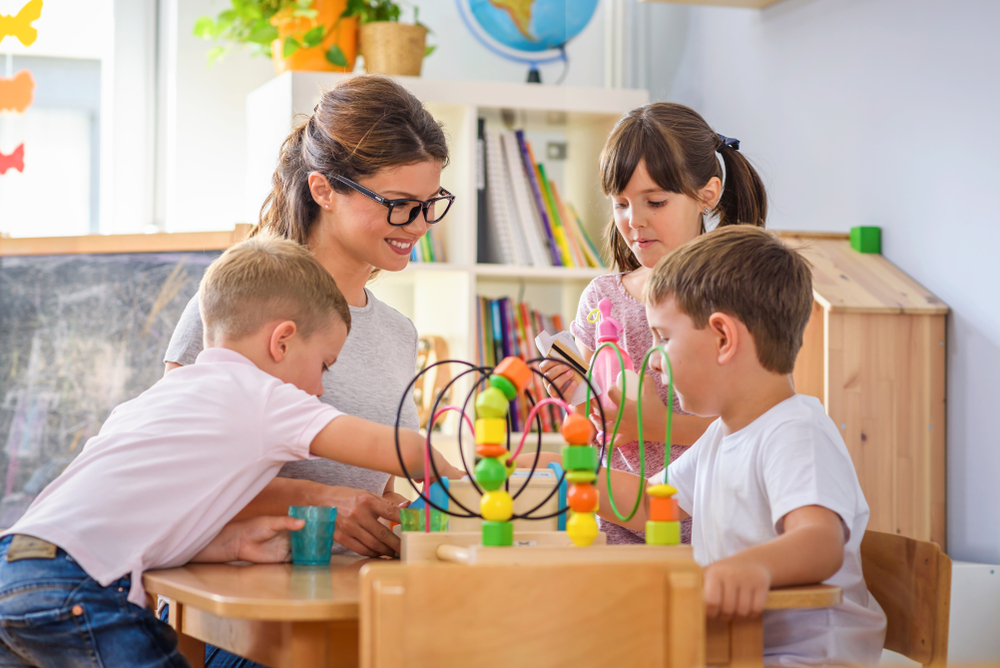
Montessori is the concept that a child is naturally interested in learning when placed in a supportive learning environment. This method of teaching believes in forming the whole child including its physical, social, emotional and cognitive wellbeing.
If you’re looking to become an expert at Montessori school management, we have some tips to make that a reality.
Posted byRebekah BratelyPosted inChildcare, childcare management software, Early Childhood EducationLeave a comment on How to Become an Expert at Montessori School Management Children who attend preschool are four times more likely to graduate college. But it may not necessarily be why you think.
But it may not necessarily be why you think.
Proving that preschool improves test scores once a child reaches first grade is difficult, and many studies have shown it’s not necessarily all about what a child learns in preschool. It’s more about instilling a passion for learning at a young age and providing outstanding care and a safe place to play on a regular basis.
Posted byRebekah BratelyPosted inChild Care, Childcare, Early Childhood EducationLeave a comment on Sending Your Child to Preschool Could Yield Lifelong BenefitsYou know the role you serve as a childcare provider in a child’s development is important. But do you know just how important? Studies show that high-quality childcare centers can improve academic and behavioral outcomes for children once they reach kindergarten.
The defining characteristics of a high-quality center aren’t solely decided by how well you teach letters, numbers, colors and shapes, however. So what makes a childcare center high-quality? We’ve compiled the results of the Early School Readiness studies to bring you these highlights of high-quality care, which produces the following affects for children:
So what makes a childcare center high-quality? We’ve compiled the results of the Early School Readiness studies to bring you these highlights of high-quality care, which produces the following affects for children:
As educators, we’re constantly researching and analyzing how children learn best. This makes education an ever-changing landscape as we adjust with new insights and learning’s.
As you strive to provide only the best care and education at your childcare center, we’ve compiled a list of current trends in childhood education that you should know about. You know your childcare center and the children you care for best, so be sure to discern if these trends are right for you before implementing.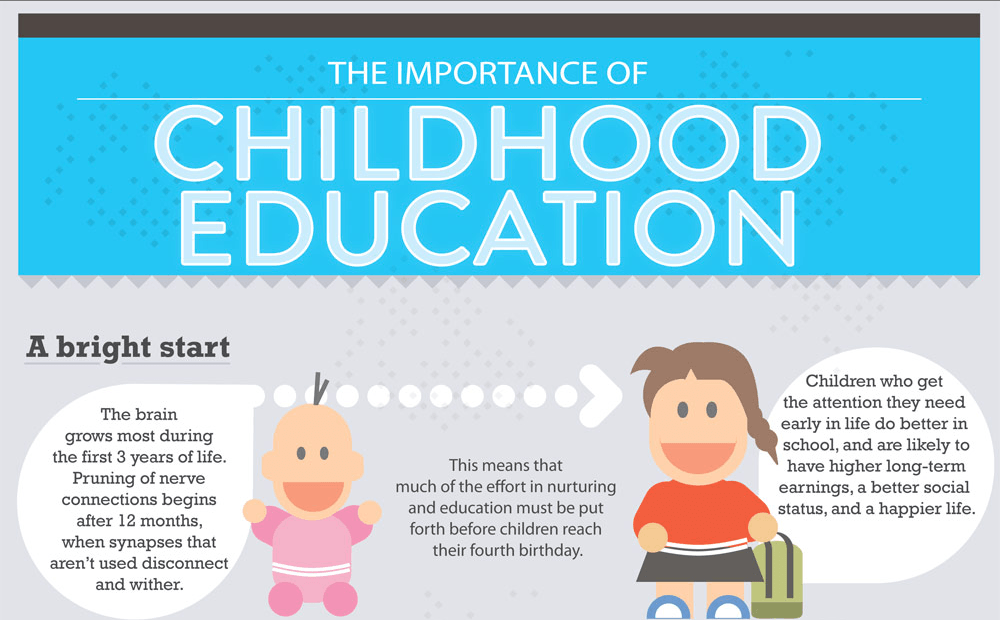 You can also discuss these trends with teachers at your next meeting to get their take on how these trends might be applicable to their classroom.
You can also discuss these trends with teachers at your next meeting to get their take on how these trends might be applicable to their classroom.
As a childcare facility administrator, the choices you make greatly affect the lives of infants and toddlers. The staff you choose will bond with the little guys and gals your facility cares for and is an important facet of helping the children learn and grow and showcasing your facility’s value to their parents.
Posted byRebekah BratelyPosted inchildcare software, Early Childhood EducationLeave a comment on Building and Retaining the Best Chilcare WorkersProgram "STEM education for children of preschool and primary school age"
Explanatory note
The proposed program "STEM-EDUCATION OF PRESCHOOL AND PRIMARY SCHOOL CHILDREN" is a partial modular program of preschool education aimed at developing intellectual abilities in the process of cognitive activity and involvement in scientific and technical creativity.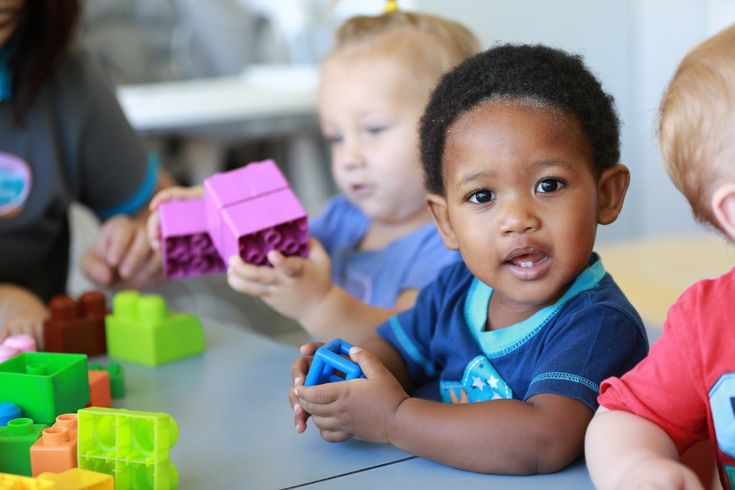
The program can also be successfully used in extracurricular activities within the framework of the main educational program of primary general education, and each of its sections - an educational module - can be used as an independent unit in the system of additional education.
The Law “On Education in the Russian Federation”, the federal state educational standard for preschool education, the state program of the Russian Federation “Development of Education” for 2018-2025 and the “Strategy for the Development of Education until 2025” set new targets for the development of the education system in the Russian Federation: creation mechanisms for its sustainable development, ensuring compliance with the challenges of the 21st century, the requirements of the innovative development of the economy, the modern needs of society and every citizen.
One of the trends in the development of modern education is its socio-cultural modernization. The focus of the methodology of socio-cultural construction of education as the leading social activity of society is the formation of civic identity, the formation of civil society, the strengthening of Russian statehood; development of individuality and competitiveness of the individual in a constantly changing world.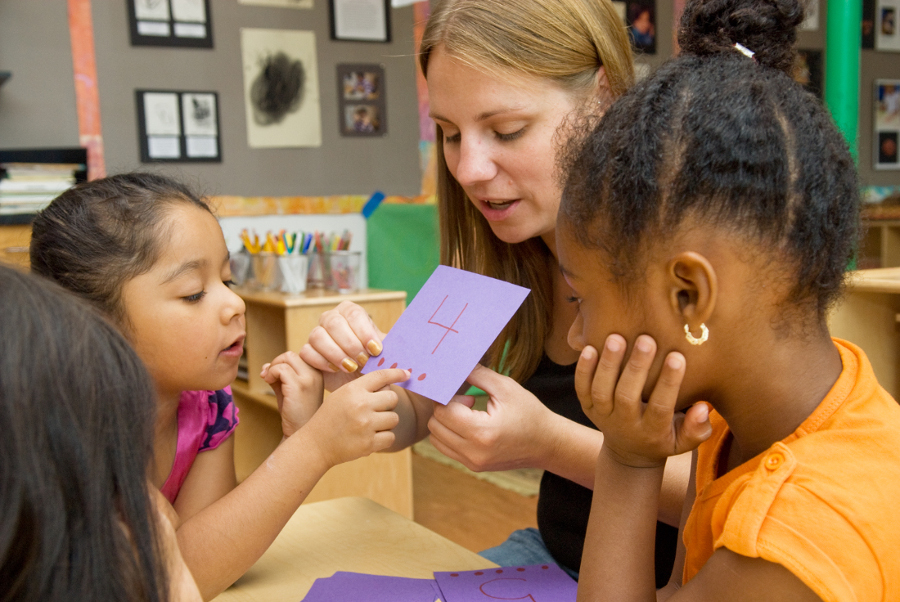
The concept of modern education is based on humanistic principles of education, which are based on the theory of "child-centrism" - the absolute value of childhood, when the idea of childhood should be at the center of any government decisions and political programs.
Hence the special status of preschool and primary levels of education, since it is during this period that the fundamental components of the formation of the child's personality and the foundations of cognitive development are laid.
GEF DO assumes the formation of cognitive interests and actions of preschoolers in various types of activities, and the primary education standard provides recognition of the decisive role of the content of education, ways of organizing educational activities and interaction of participants in the educational process to achieve the goals of personal, social and cognitive development of younger students.
Thus, at the present stage of development of education for children of preschool and primary school age, the emphasis is shifted to the development of the personality of the child in all its diversity: curiosity, purposefulness, independence, responsibility, creativity, ensuring successful socialization of the younger generation, increasing the competitiveness of the individual and, as a result , society and the state.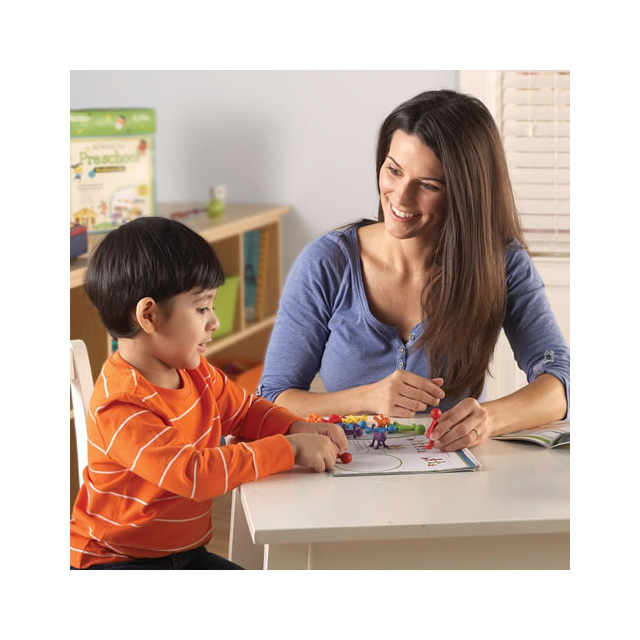
Modern education is more and more focused on the formation of key personal competencies, that is, skills directly related to the experience of their application in practical activities, which allow students to achieve results in uncertain, problematic situations, to solve problems independently or in cooperation with others, are aimed to improve the skills to operate with knowledge, to develop the intellectual abilities of children.
Currently, there is a wide variety of interpretations of the terms "intelligence" and "intellectual abilities" (G. Gardner, M. A. Kholodnaya, N. N. Moiseev). The most common is the concept of intelligence as "the ability to carry out the process of cognition and to effectively solve problems, the ability to plan, organize and control one's actions to achieve the goal."
Essential for understanding the intellect and intellectual abilities are such personality traits as the desire for new knowledge and deep understanding of everything that aroused interest; the ability to use existing experience and separate the main from the secondary; logic, criticality, breadth and creativity of thinking; the ability to generalize, abstract and find patterns; learnability.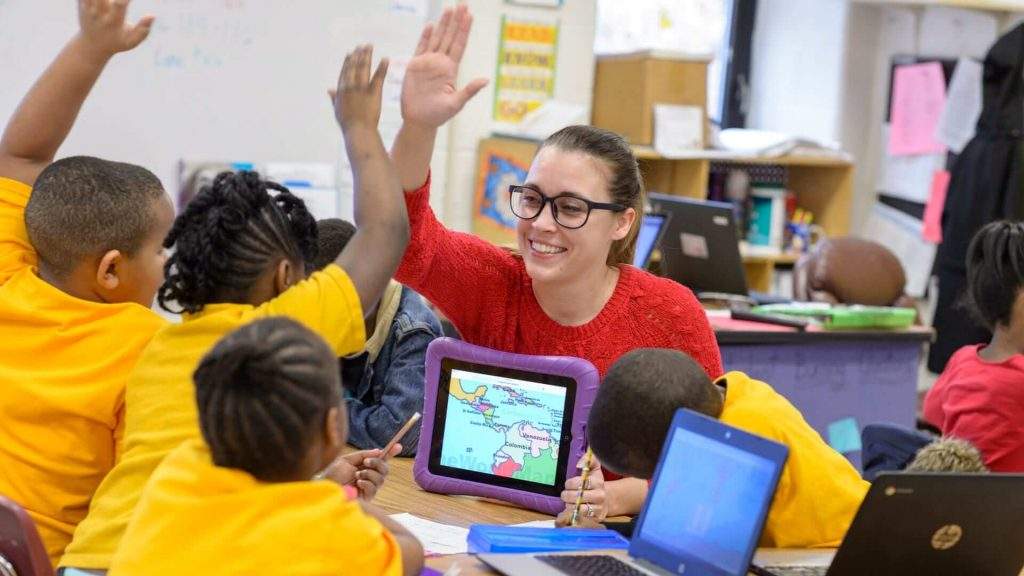
In the modern world, the problem of becoming a creative person who is able to independently replenish knowledge, extract useful things, and realize their own goals and values in life is very urgent. This can be achieved through cognitive research activities, since the child's need for new experiences underlies the emergence and development of inexhaustible research activity aimed at understanding the world around. In the presented program, the emphasis is placed on cognitive research activities, which are aimed at obtaining new and objective knowledge.
One of the significant areas of cognitive research activity is children's scientific and technical creativity, and one of the most innovative areas in this area is educational robotics, which combines classical approaches to studying the basics of technology and information modeling, programming, and information technology.
The comprehensive program "Development of educational robotics and continuous IT education in the Russian Federation" (No. 172-R of 01.10.2014) defined a number of tasks focused on preschool and primary levels of education. Among them:
172-R of 01.10.2014) defined a number of tasks focused on preschool and primary levels of education. Among them:
- popularization of educational robotics and scientific and technical creativity as forms of leisure activities for students of preschool, general and additional education organizations;
- technical equipment of organizations of preschool, general and additional education of children, implementing programs to study the basics of robotics, mechatronics, IT and scientific and technical creativity of youth;
- improvement of the system of self-study in the implementation of programs of preschool, general and additional education for children;
- improving the efficiency of using interactive technologies and modern technical teaching aids;
- improvement of the mechanisms of public-private partnership in the system of preschool, general and additional education.
These tasks are designed to develop in a child such structural elements of information competence as the formation of information processing processes; formation of motivational motives and value orientations; understanding of the principles of operation, capabilities and limitations of technical devices designed for automated search and processing of information; communication skills, the ability to communicate; ability to analyze their own activities.
The essence of scientific and technical creativity lies in the application of scientific achievements to create technical products that meet specified requirements. The basic method of technical creativity is design, that is, the creation of a new one from a set of already existing, ready-made elements, although recently elements of design activity have been introduced into technical creativity.
There is a technological revolution going on right now. High-tech products and innovative technologies are becoming an integral part of modern society. If in developed countries there are many regional and national projects to attract children to scientific and technical creativity, to increase its attractiveness and status, then in our country with the disappearance of the system of circles of young technicians, modellers and designers, children's technical creativity has declined. At present, the system of technical creativity of children of preschool and primary school age is being revived, taking into account the requirements of the time.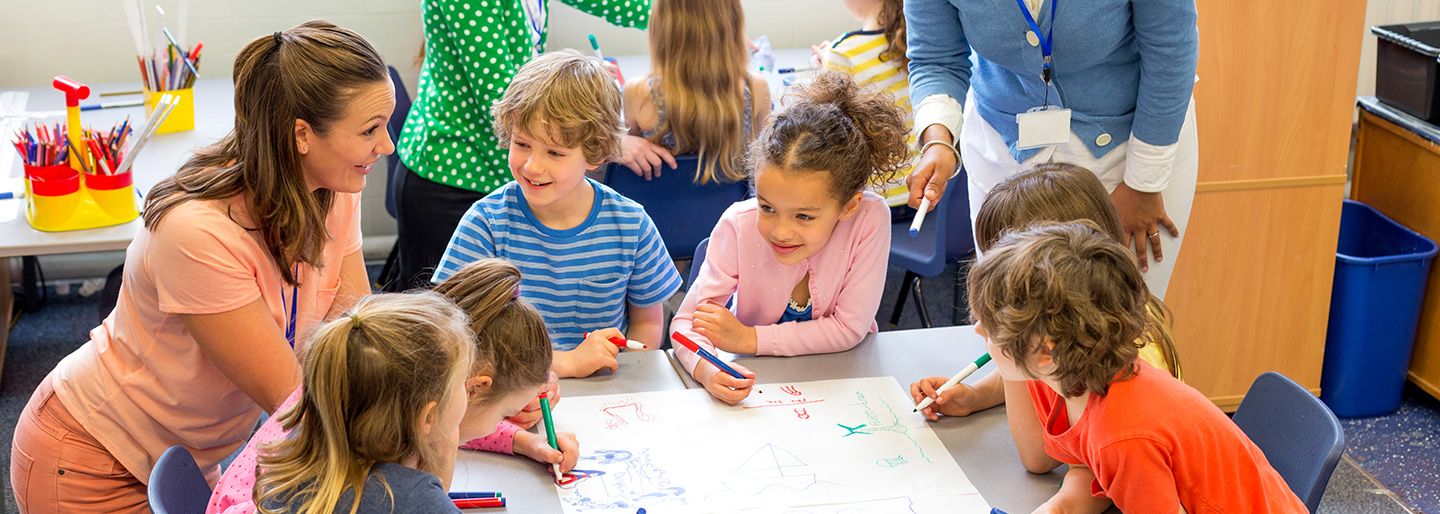 There are investments in the creation of children's technology parks. New state educational standards require the introduction of modern technologies in the educational process. However, the designation of the problem does not say anything about how exactly the technical creativity of preschoolers and younger schoolchildren should develop.
There are investments in the creation of children's technology parks. New state educational standards require the introduction of modern technologies in the educational process. However, the designation of the problem does not say anything about how exactly the technical creativity of preschoolers and younger schoolchildren should develop.
An attempt to develop intellectual abilities in regulated classes in kindergarten and lessons in elementary school is ineffective, since higher levels of competencies require independence, responsibility in solving non-standard tasks, which is poorly achievable within the traditional model of education. Only a fundamentally new construction of the educational environment, an integral part of which is the developing object-spatial environment, can answer this challenge.
Therefore, the purpose of this partial modular educational program "STEM education of children of preschool and primary school age" is to develop the intellectual abilities of children of preschool and primary school age by means of STEM education.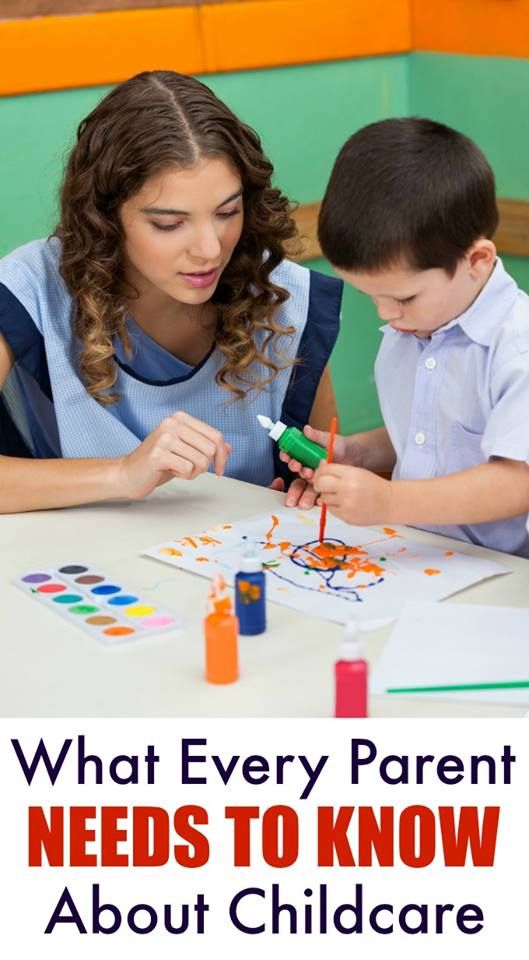
If you decipher this abbreviation, you get the following: S - science, T - technology, E - engineering, M - mathematics: natural sciences, technology, engineering, mathematics.
That is why today the STEM system is developing as one of the main trends. STEM education is based on the application of an interdisciplinary and applied approach, as well as the integration of all four disciplines into a single scheme.
From the address of the President of the Russian Federation V.V. Putin to the Federal Assembly of the Russian Federation on March 1, 2018: “Today, knowledge, technology, and competencies are the most important competitive advantage. This is the key to a real breakthrough, to improving the quality of life. In the shortest possible time, we need to develop an advanced legislative framework, remove all barriers to the development and widespread use of robotics, artificial intelligence, unmanned vehicles, e-commerce, and big data processing technologies.” These words actualize STEM education and emphasize its advantages, namely:
- An integrated approach to solving modern problems based on the interpenetration of various areas of natural sciences, engineering creativity, mathematics, digital technologies, etc.
 This integration is based on the project method based on cognitive and artistic search and having a specific real product in as a result of activity.
This integration is based on the project method based on cognitive and artistic search and having a specific real product in as a result of activity. - Adaptation of children, starting from preschool age, to the modern educational environment at all levels of education. In the context of the continuity of all levels of the educational system of the Russian Federation, all components of the educational environment - content, technology, subject-spatial content, material and technical support - are successive in the logic of age-related opportunities and content complication.
- The development of intellectual abilities in the process of cognitive research activities and involvement in scientific and technical creativity is aimed at developing not only competencies specific to these types of activities, but also a comfortable sense of self in the modern world, creating conditions for a high quality of life in the future.
- The development of critical thinking is seen as a three-stage process aimed at the formation of:
- skills to obtain the necessary information;
- skills to analyze it;
- skills to apply the received information in practice.

- The formation of teamwork skills in synthesis with the individualization of education lies in the ability to:
- combine individual intelligent algorithms to achieve common goals;
- negotiate, ask questions correctly, argue with logically substantiated facts, etc.,
that is, it forms a culture of discussion and the skill of "sublimated conclusion". The overall positive result forms self-confidence and a sense of teamwork efficiency.
In addition, in the process of collective activity, a value attitude is brought up both to the process and to the results of labor, both of the general and of each participant.
- Primary propaedeutics of a number of professions and specialties of the 21st century, including: specialists in the field of information technology, including information security, who are able to work with a large amount of operational information; analysts, engineers and operators of electronic computing systems; specialists of engineering industries; specialists in the field of robotics, automation, nuclear physics, radiochemistry, safety and non-proliferation of nuclear materials; military professions where technical knowledge from different areas is required.

- Development of interest in technical creativity. STEM education is designed to revive the system of sections and circles of "young technicians", based on the natural interest of children in technical design and modeling.
It is important that these types of activities are based on the child's research experience acquired in kindergarten, so that the natural-science picture of the world is formed on the basis of a system-activity approach and is based on knowledge gained experimentally.
In this program, the child explores the world around him through play and experimentation with objects of animate and inanimate nature. Methodological materials provide a link between living beings and robots, motivating the child to move from the game and children's experiment through design and exciting technical and artistic creativity to the design and creation of robots - models resembling objects of the living world. The basics of programming and the use of sensors lead the child to desire to endow these creatures with sight, hearing and logic. This is a very exciting process that can become a motivational core until graduation and getting your favorite specialty: engineer, programmer, designer, scientist.
This is a very exciting process that can become a motivational core until graduation and getting your favorite specialty: engineer, programmer, designer, scientist.
STEM thus becomes an addition to the compulsory part of the main educational program (BEP). In the main educational program for preschoolers, especially in the part developed by the participants in educational relations, the demanded content is mobile and dynamically implemented, which meets the interests and priorities of the modern preschooler.
STEM programs for elementary school students are focused on increasing their interest in regular lessons, where they receive basic knowledge from various fields of science and technology. In extracurricular activities, students apply the knowledge they have already acquired and supplement it with the skills obtained in experimental practice.
- Formation of the foundations of security, both one's own (in the process of interaction with the outside world) and the security of the environment, which directly depends on human activity, understanding technocratic risks, the impact of technological development on the environment and the state of the planet as a whole.
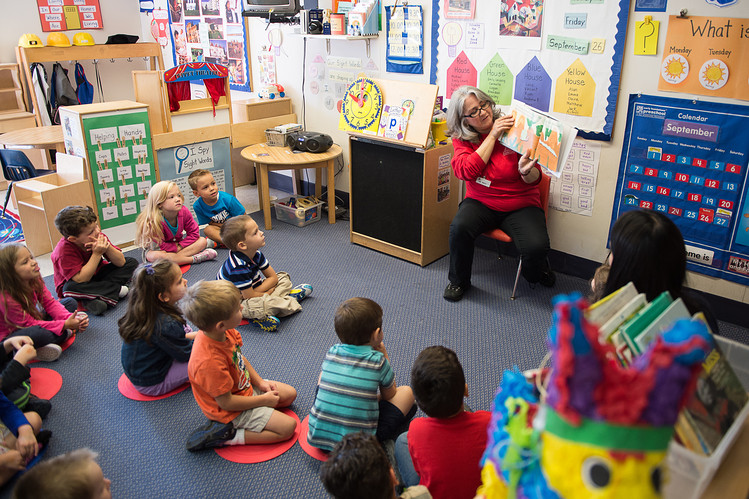 Particularly relevant is the question of the possible impact of robotization on the fate of mankind.
Particularly relevant is the question of the possible impact of robotization on the fate of mankind. - Creation of conditions for the identification and further support of gifted children with extraordinary thinking and showing special abilities and desire for scientific and technical creativity.
Note that these advantages provide amplification of child development, “a necessary condition for the versatile upbringing of a child” (AV Zaporozhets). The significance of the richness of opportunities in the early stages of child development is especially great. This is a means of overcoming his one-sidedness, revealing inclinations and abilities. In accordance with the theory of A. V. Zaporozhets, the STEM education program involves the maximum enrichment of specific forms of children's activities: games, cognitive research, design, artistic and aesthetic, and also provides the opportunity for children to communicate productively with each other, with teachers and parents for a full-fledged development of the intellectual abilities of each child.
This partial modular program "STEM-EDUCATION OF PRESCHOOL AND PRIMARY SCHOOL CHILDREN" determines the content and organization of the educational process for preschool children in the studio-circle, and junior school - in extracurricular activities. This content can also supplement the mandatory part of the main general education program.
Structural partial modular program "STEM-EDUCATION OF PRESCHOOL AND PRIMARY SCHOOL CHILDREN" is presented in the integration of educational modules indicated in the diagram.
Implementation of educational modules in the priority activities of children of preschool and primary school age
- Game.
- Design.
- Cognitive and research activities.
- Educational activities.
- Various types of artistic and creative activities.
- Mastering XX technologies! century (elements of programming and digital technologies).
Each module is aimed at solving specific tasks, which, when integrated, ensure the implementation of the goals of STEM education: the development of intellectual abilities in the process of cognitive research activities and the involvement of preschool and primary school children in scientific and technical creativity.
The Program provides conditions for the development of intellectual abilities in accordance with the age and individual characteristics of the child. Starting with sensory perception through visual-figurative and verbal-logical thinking (“F. Froebel’s didactic system”, “Mathematical development”, “Experimenting with animate and inanimate nature”), the prerequisites are created for the scientific and technical creativity of children, during which they receive and apply the knowledge of algorithmization, design and programming and conduct project activities (“LEGO-construction”, “Animation studio “I create the world”, “Robotics”).
The activity of an adult is aimed at making the child accept the general scheme of action, feel the connection between educational modules, the meaning of each link in the general system of action, the hierarchy of secondary and main goals. In this case, the child acquires the ability to act "in the mind", which is the most important condition for the development of intellectual abilities.
The content of each module is divided into two parts: for preschool children and for younger students. Within each part, the content is differentiated, taking into account the specifics of the educational module and the age of the pupils.
Achievement of the set goals is carried out in activities specific for children of this age, such as playing, designing, cognitive and research activities (including scientific and technical creativity), various types of artistic and creative activities (design, creating cartoons, etc.) . These types of activities organically include the development of technologies of the XXI century (elements of programming and digital technologies).
Read full program...
MBDOU "Kindergarten No. 18 "Smile". Education
Basic information
EDUCATION
Program name as licensed by an educational institution
Number of students enrolled in this program
Details of the municipal legal act, which approved the marginal prices (tariffs)
free
for a fee
Basic Educational Program of Preschool Education (OEPDO)
424
0
-
Adapted Basic Educational Program for Preschool Education for Children with Severe Speech Disabilities (AEEPDO TNR)
15
0
-
Adapted Early Childhood Core Education Program for Children with Autism Spectrum Disorders
(AOOPDO RAS)
5
0
-
Adapted Early Childhood Core Education Program for Children with Mental Retardation
(AOOPDO ZPR)
17
0
-
Total
0
-
The content of educational activities in a preschool educational institution is determined by the educational program of the institution, developed, adopted and implemented in accordance with the federal state educational standard for preschool education, taking into account the peculiarities of psychophysical development and the capabilities of children in kindergarten.
Objective of the program: creation of favorable conditions for a full life of a child in preschool childhood, the formation of the foundations of a basic personality culture, the comprehensive development of mental and physical qualities in accordance with age and individual characteristics, preparation for life in a modern society, the formation of prerequisites for educational activities, ensuring the safety of the life of a preschooler.
Implementation of educational programs within the framework of the municipal task, equipping educational institutions with educational and educational visual aids, games, toys, technical and other teaching aids, consumables, psychological and pedagogical support of pupils is provided free of charge to the consumer.
Establishment of the fee charged from parents (legal representatives) of pupils for ensuring the maintenance of children (childcare and childcare) in an educational institution is carried out in accordance with the legislation of the Russian Federation.
E-learning and distance learning technologies are not provided.
INFORMATION ABOUT THE LEVEL OF EDUCATION IMPLEMENTED AT THE PRESCHOOL INSTITUTION, THE FORM OF EDUCATION, THE LANGUAGE IN WHICH EDUCATION IS CARRIED OUT
- the level of education implemented at the pre-school level.
Licenses for educational activities - No. 3249 dated February 6, 2019, unlimited.
Form of study - full-time.
Language of education - Russian.
Normative terms of training - 6 years.
| Program name | Realizable level | Form | Standard dates |
| Educational | Preschool (education is carried out in Russian) | FULL (collective, group, | 6 years (during the entire stay from 1 to 2 years - one year; from 2 years to 3 years - one year; from 3 to 4 years - one year; from 4 to 5 years - one year; from 5 to 6 years - one year; from the age of 6 until the termination of educational relations - one year. |
| e-learning and distance learning technologies | not implemented |
INFORMATION ON THE NUMBER OF STUDENTS
For educational programs being implemented at the expense of budgetary appropriations of the federal budget, the budgets of the subjects of the Russian Federation and local budgets
The number of students at the expense of the budgetary allocations of the subjects of the Russian Federation and local budgets - 461 people.
The number of students who are foreign citizens at the expense of the budgetary allocations of the constituent entities of the Russian Federation and local budgets - 0 people.
| Age group | Number of groups | Number of pupils | Implemented programs | |
| OOPDO | AOPDO | |||
| Early age group I (1 to 2 years) | 2 | 74 | 74 | - |
| Early age group II (2 to 3 years) | 1 | 37 | 37 | - |
| Primary preschool age group (3 to 4 years old) | 3 | 93 | 93 | - |
| Group of middle preschool age (4 to 5 years) | 2 | 62 | 62 | - |
| Senior preschool age group (5 to 6 years old) | 2 | 63 | 63 | - |
| School preparatory group (6 to 8 years old) | 2 | 64 | 64 | - |
| Mixed-age group for children of middle and senior preschool age (4 to 6 years old) | 1 | 31 | 31 | - |
| Group of compensatory orientation for children of ASD (from 3 to the end of the educational relationship) | 1 | 5 | - | 5 |
| Combined Orientation Group for Children with SAD (4 to 5 years) | 1 | 15 | - | 15 |
| Combined orientation group for children with mental retardation (from 6 years to the end of the educational relationship) | 1 | 17 | - | 17 |
| TOTAL | 461 people | |||
BASIC EDUCATIONAL PROGRAMS OF PRESCHOOL EDUCATION
The institution implements an educational program of preschool education, developed in accordance with the Federal State Educational Standard for Preschool Education "(approved by Order of the Ministry of Education and Science of Russia dated October 17, 2013 No.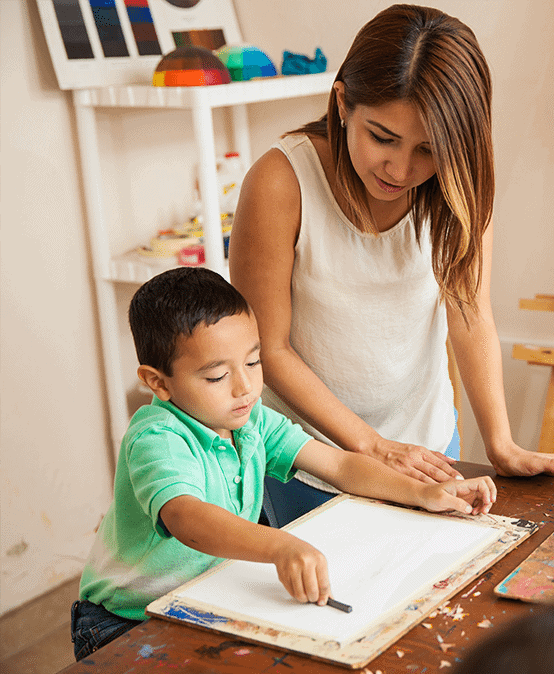 1155 "On Approval of the Federal State Educational Standard for Preschool Education") , for full-day groups.
1155 "On Approval of the Federal State Educational Standard for Preschool Education") , for full-day groups.
Two parts are distinguished in the structure of the program: a mandatory part of the educational program for preschool education of children from 2 months. until the termination of educational relations, ensuring the achievement by pupils of physical and psychological readiness for school, and the part formed by the participants in educational relations.
The educational program provides comprehensive development and education for children from 2 months of age. until the termination of educational relations, taking into account their age and individual characteristics in the main areas of development: physical, social and communicative, cognitive, speech and artistic and aesthetic.
When implementing the educational program, various forms of organization of children's activities are used, such as collective, group and individual.
CURRENT EDUCATION PROGRAMS
|
| The main general educational program of preschool education of the MBDOU “Kindergarten No. The main general educational program of preschool education contains a list of programs, technologies, methodological aids necessary for the implementation of the educational process.
|
| The direction of development of the pupil | Age of children | Implemented program |
| Mandatory part | ||
| SOCIO-COMMUNICATION | from 1 year until termination of educational relationship | Basic educational program of preschool education "From birth to school" |
| COGNITIVE | ||
| SPEECH | ||
| ARTISTIC AND AESTHETIC | ||
| PHYSICAL | ||
| Part formed by the participants in the relationship | ||
| SOCIO-COMMUNICATION | from 3 years until termination of educational relationship | The main provisions of the educational technology "Socio-cultural origins", authors I. |
| SPEECH DEVELOPMENT | from 3 years until termination of educational relationship | "The program for the development of speech of preschoolers" Ushakova O.S. |
| from 5 years until termination of educational relationship | “From sound to letter. Formation of sound analytic and synthetic activity of preschoolers as a prerequisite for literacy education” by E. V. Kolesnikova. | |
| PHYSICAL | from 5 years until termination of educational relationship | Chess training program for children Sukhin I.G. |
| ARTISTIC AND AESTHETIC | from 1 year until termination of educational relationship | "The program of comprehensive musical education and education Ladushka" ed. |
| COGNITIVE | from 3 years until termination of educational relationship | Program "Mathematical Steps", author E.V. Kolesnikova |
Local acts regulating educational activities
-
Calendar-thematic plan 2022-2023
-
Schedule 2022-2023
-
MBDOU 18 Tutor regulation
-
Organization of educational activities for the 2022-2023 academic year.
-
Daily routine for the cold and warm period for the 2022-2023 academic year
-
Curriculum for 2022-2023 academic year
Operating programs
-
Annotation to the work programs of educators
-
AOOP for children 3-8 years old with ASD
-
Work program for a general developmental early age group for children 1.
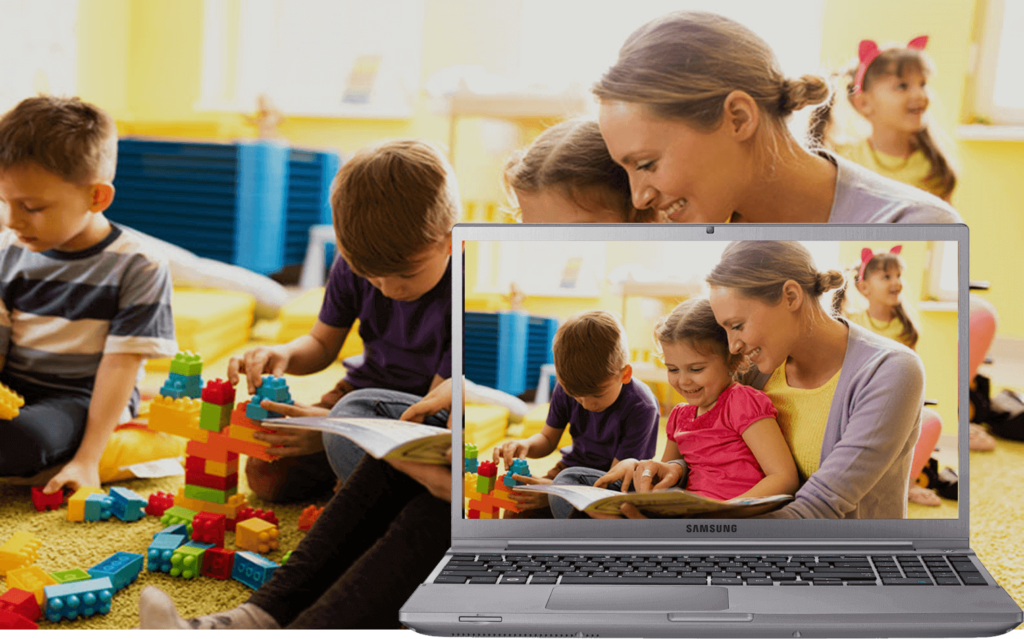 5 - 3 years old Beads for the 2022-2023 academic year
5 - 3 years old Beads for the 2022-2023 academic year -
The work program of an early age group of a general developmental orientation for children 2-3 years old Luchiki for the 2022-2023 academic year
-
Work program of a general developmental group of different ages for children 4-6 years old for the 2022-2023 academic year
-
The work program of the junior group of general developmental orientation for children 3-4 years old Freckles for the 2022-2023 academic year.
-
The work program of the junior group of general developmental orientation for children 3-4 years old Gnomes for the 2022-2023 academic year.
-
The work program of the junior group of general developmental orientation for children 3-4 years old Drops for the 2022-2023 academic year.
-
The work program of the preparatory group of a general developmental orientation for children 6-7 years old Fireflies for the 2022-2023 academic year.
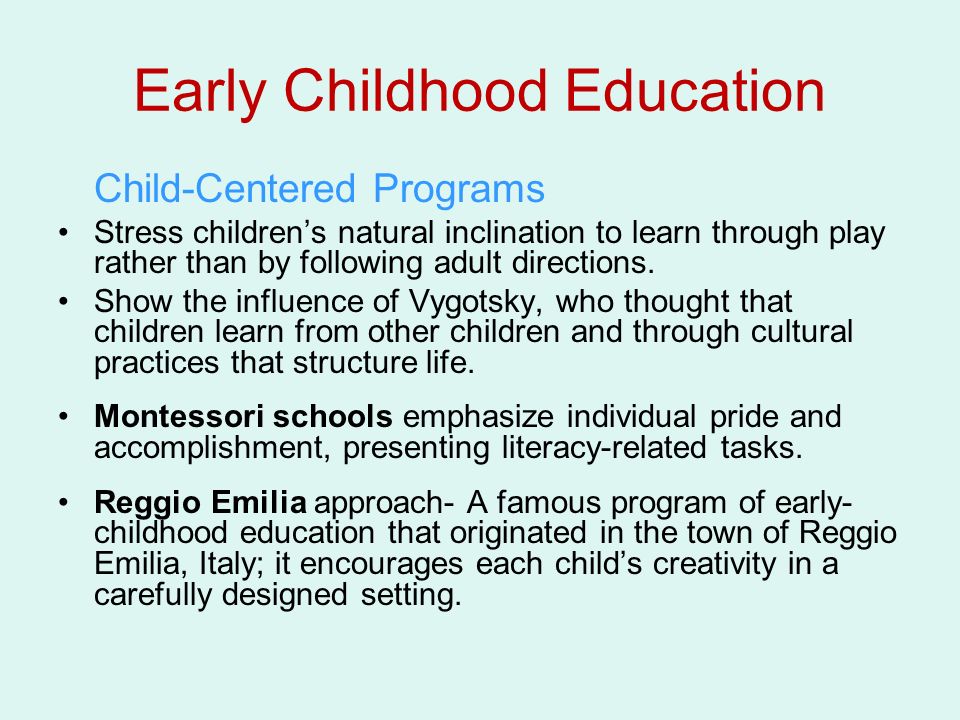
-
Work program of the general developmental preparatory group for children 6-7 years old Watercolors for the 2022-2023 academic year.
-
Work program of the middle group of a general developmental orientation for children 4-5 years old Entertainers for the 2022-2023 academic year.
-
The work program of the senior group of a general developmental orientation for children 5-6 years old Dolphins for the 2022-2023 academic year.
-
Work program of the senior group of a general developmental orientation for children aged 5-6 years Semitsvetiki for the 2022-2023 academic year
-
Work program Ski Patrol 2022 - 2023 academic year
-
Work program in physical culture 2022-2023 academic year Maltsev N.G.
-
Work program on physical culture 2022-2023 academic year Sakhabidinov R.R
-
Work program for artistic and aesthetic development drawing 22-23 years
-
Work program for speech pathologist
-
The work program of a psychologist teacher for the 2022-2023 academic year Chuprakov A.

Learn more

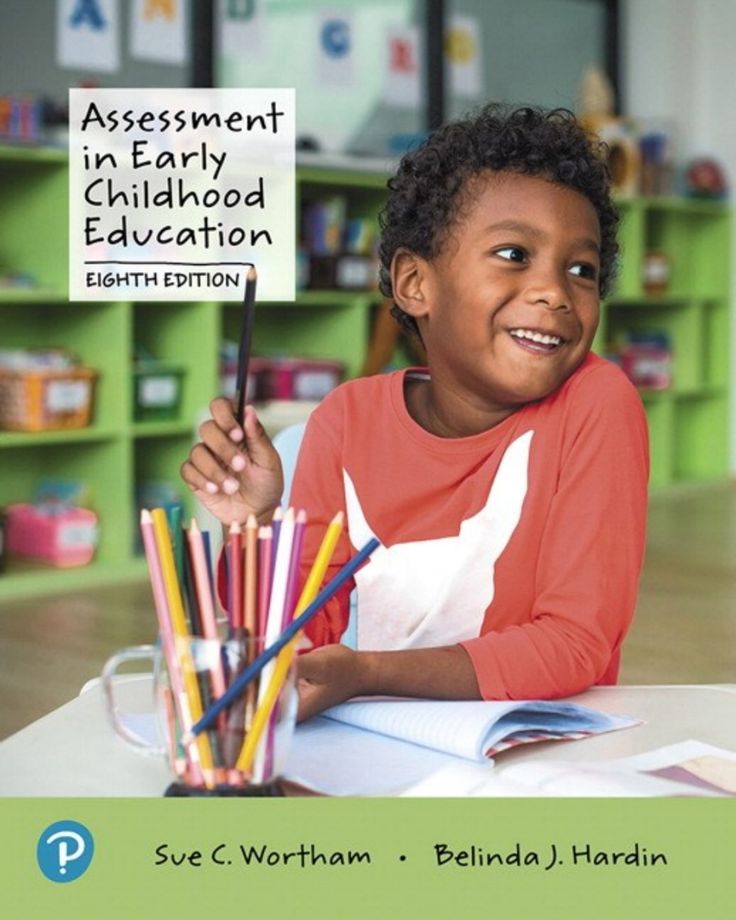 18 "Smile"
18 "Smile" 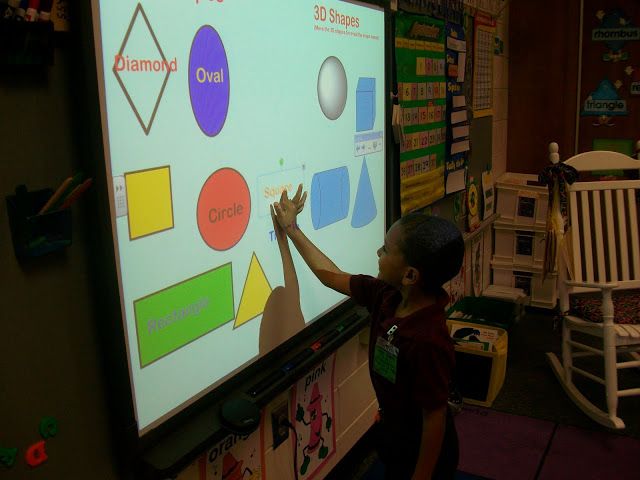
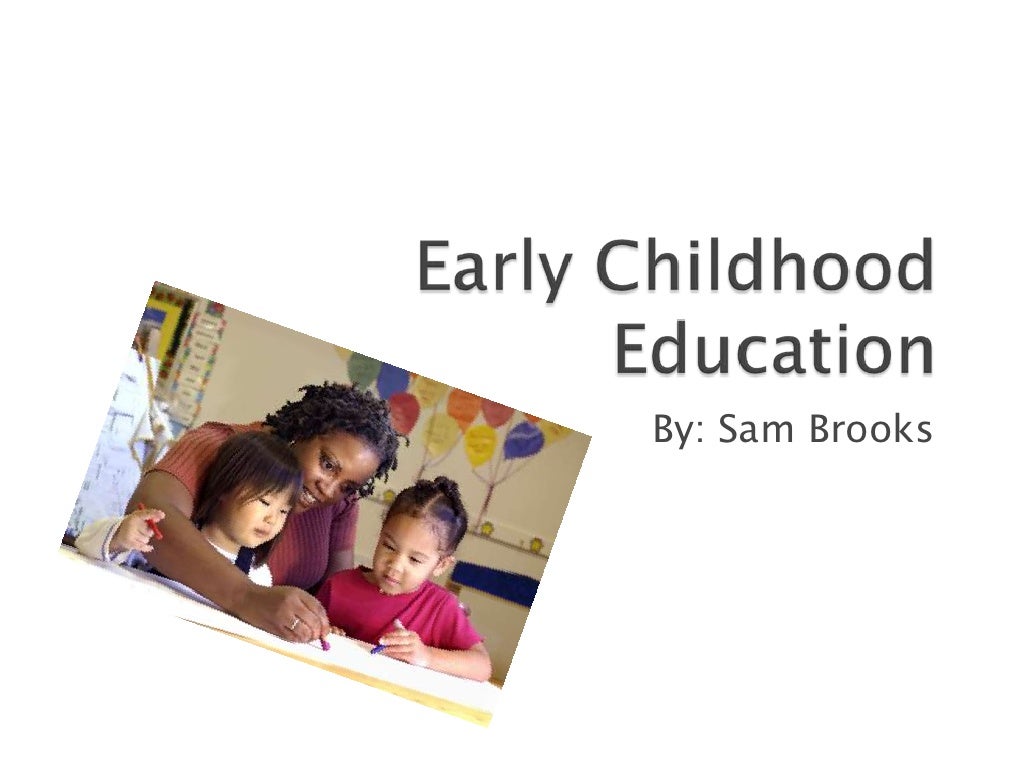 18 “Smile” is compiled on the basis of the main educational program of preschool education “From birth to school”, edited by T N.E. Veraksa, T.S. Komarova, M.A. Vasilyeva in accordance with the requirements of the Federal State Educational Standard for Preschool Education. link
18 “Smile” is compiled on the basis of the main educational program of preschool education “From birth to school”, edited by T N.E. Veraksa, T.S. Komarova, M.A. Vasilyeva in accordance with the requirements of the Federal State Educational Standard for Preschool Education. link 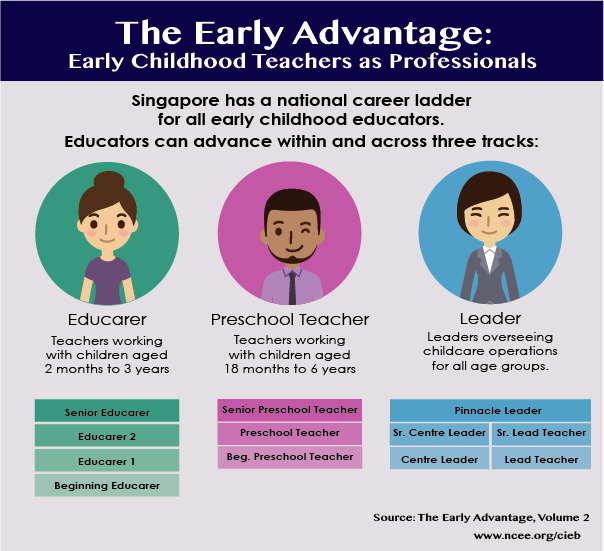 A. Kuzmin, A.V. Kamkin
A. Kuzmin, A.V. Kamkin  Kaplunova I.M., Novoskoltseva I.A.
Kaplunova I.M., Novoskoltseva I.A. 